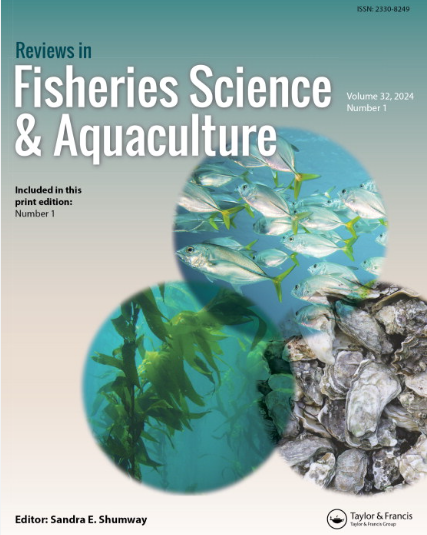Efficacy of Time-Area Fishing Restrictions and Gear-Switching as Solutions for Reducing Seabird Bycatch in Gillnet Fisheries
IF 5.3
1区 农林科学
Q1 FISHERIES
引用次数: 8
Abstract
Abstract Despite the global scale of gillnet bycatch, universal measures that effectively reduce bycatch of seabirds in gillnets have not been found. Bycatch in coastal gillnet fisheries is an ongoing threat for several seabird species. Strategies to reduce seabird bycatch in gillnet fisheries were evaluated, focusing on the effectiveness of time-area fishing restrictions and gear-switching to meet seabird conservation objectives, ensure fisher acceptance, and avoid unintended consequences. A review of case studies showed that variations in the spatial and temporal distributions of target and non-target species may cause a mismatch between time-area regulations and high bycatch, but consideration of bycatch species behavior can help define effective fine-scale spatial and temporal measures. The potential for meeting conservation objectives through gear-switching is promising, with some further development needed for successful application. Combining measures (e.g., time-area fishing restrictions, gear-switching, visual and acoustic deterrents) may be feasible in some regions, if fine-scale spatial and temporal information about the overlap of seabirds and gillnet gear is available. A holistic approach to reduce seabird bycatch in gillnets, including understanding of seabird biology, habitat preference, and feeding ecology combined with information about fishing activity, target species, and socioeconomic impacts provides a framework to develop mitigation measures.限制渔捞时间和转换渔具对减少刺网渔业副渔获的效果
尽管刺网副渔获在全球范围内规模巨大,但有效减少刺网副渔获的普遍措施尚未找到。沿海刺网渔业的副渔获是对几种海鸟物种的持续威胁。对刺网渔业中减少海鸟副渔获的策略进行了评估,重点是在满足海鸟保护目标、确保渔民接受和避免意外后果的情况下,实施区域捕捞限制和渔具转换的有效性。案例研究表明,目标和非目标物种的时空分布变化可能导致时间区域调控与高副渔获量之间的不匹配,但考虑副渔获物的行为有助于确定有效的精细尺度时空措施。通过齿轮切换实现保护目标的潜力是有希望的,但需要进一步发展才能成功应用。如果能够获得海鸟和刺网渔具重叠的精细时空资料,那么在某些区域,综合措施(例如,限时捕鱼、换挡、视觉和听觉威慑)可能是可行的。减少刺网附带捕获海鸟的整体方法,包括了解海鸟生物学、栖息地偏好和饲养生态学,结合有关捕鱼活动、目标物种和社会经济影响的信息,为制定缓解措施提供了一个框架。
本文章由计算机程序翻译,如有差异,请以英文原文为准。
求助全文
约1分钟内获得全文
求助全文
来源期刊

Reviews in Fisheries Science & Aquaculture
FISHERIES-
CiteScore
25.20
自引率
0.90%
发文量
19
期刊介绍:
Reviews in Fisheries Science & Aquaculture provides an important forum for the publication of up-to-date reviews covering a broad range of subject areas including management, aquaculture, taxonomy, behavior, stock identification, genetics, nutrition, and physiology. Issues concerning finfish and aquatic invertebrates prized for their economic or recreational importance, their value as indicators of environmental health, or their natural beauty are addressed. An important resource that keeps you apprised of the latest changes in the field, each issue of Reviews in Fisheries Science & Aquaculture presents useful information to fisheries and aquaculture scientists in academia, state and federal natural resources agencies, and the private sector.
 求助内容:
求助内容: 应助结果提醒方式:
应助结果提醒方式:


